How Microsoft Copilot Summarizes Business Documents With Advanced AI Technology
- Aisha Washington

- Aug 2
- 12 min read
Updated: Aug 4
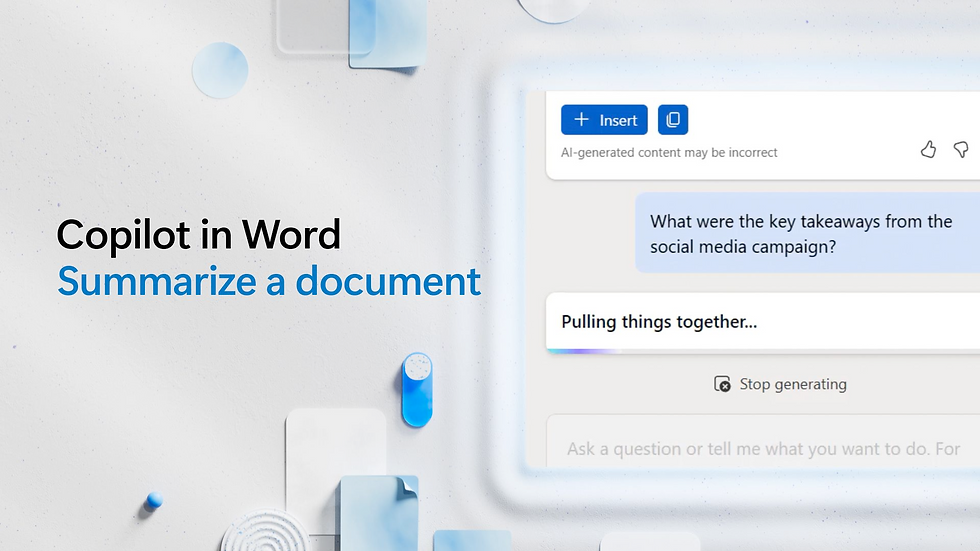
In today’s fast-paced business environment, professionals are inundated with vast amounts of information daily — reports, contracts, emails, meeting notes, and more. Extracting key insights quickly and accurately from these documents can mean the difference between making informed decisions and falling behind. Enter Microsoft Copilot, the groundbreaking AI-powered assistant designed to transform how businesses interact with their documents through intelligent summarization.
This article explores how Microsoft Copilot leverages advanced AI technology to summarize business documents, streamlining workflows and enhancing productivity. From the underlying AI models to practical applications and benefits, we’ll unpack everything you need to know about this transformative tool.
Introduction: The Need for AI-Powered Document Summarization
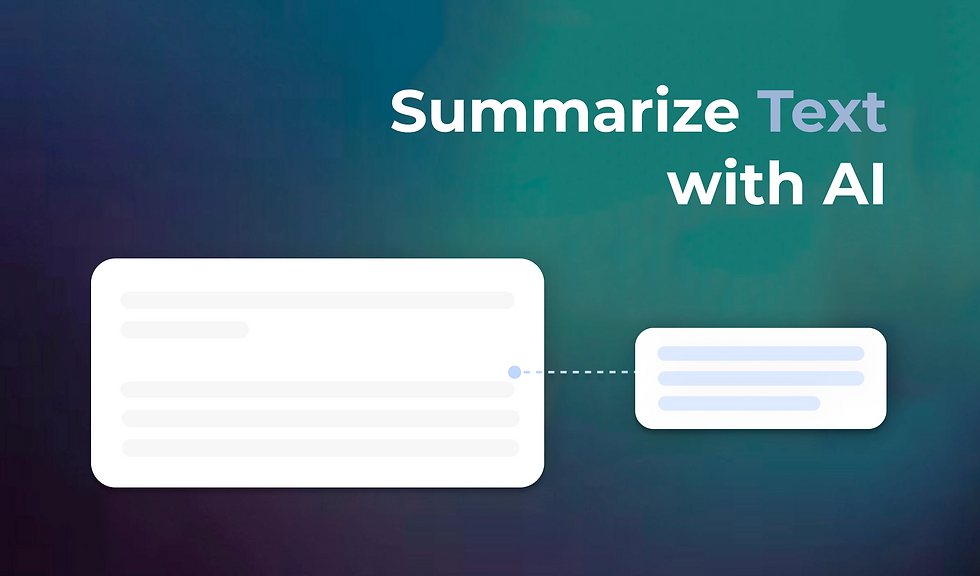
Businesses today are drowning in data. According to IDC, the global datasphere is expected to grow to 175 zettabytes by 2025 — a staggering volume of information that includes countless business documents. Yet, the human capacity to read and comprehend these materials remains limited.
Document summarization is the process of condensing large volumes of text into concise, meaningful summaries without losing the essence or critical details. Traditionally, this has been a labor-intensive task prone to human error and inconsistency.
Microsoft Copilot changes the game by applying state-of-the-art artificial intelligence to automate and optimize document summarization. By integrating with Microsoft 365 apps like Word, Excel, and Outlook, Copilot empowers users to quickly generate accurate summaries that save time and enhance decision-making.
“The ability to extract actionable insights from large business documents instantly is revolutionizing corporate workflows.” — Gartner Report on AI in Enterprise Productivity
For professionals seeking to reduce information overload and improve efficiency, understanding how Microsoft Copilot’s AI-driven summarization works is essential.
Understanding Microsoft Copilot’s Advanced AI Technology
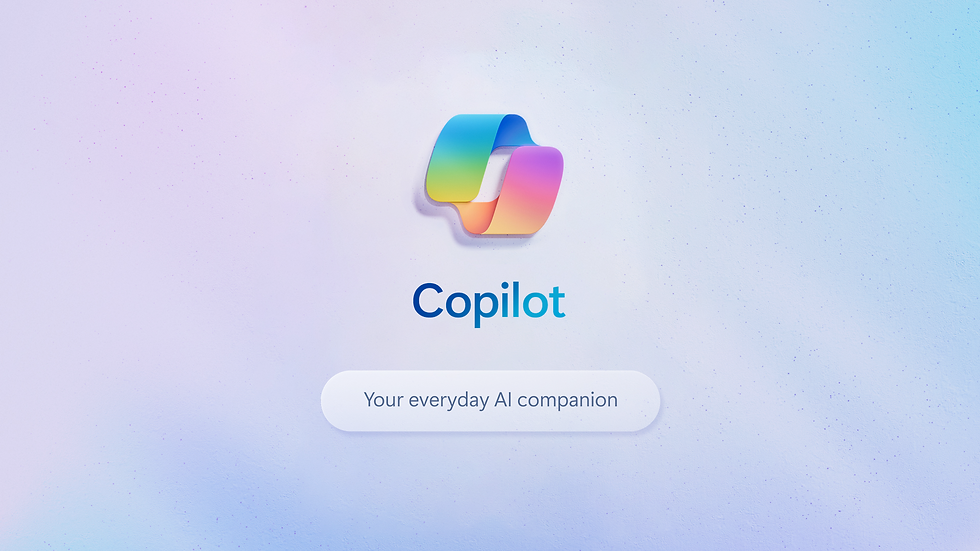
What is Microsoft Copilot?
Microsoft Copilot is an AI assistant embedded within Microsoft 365 applications, designed to help users create, analyze, and summarize content by leveraging large language models (LLMs), including OpenAI’s GPT technology. It combines natural language processing (NLP), machine learning, and contextual awareness to understand complex documents and extract salient points.
Copilot is not just a passive summarizing tool; it actively collaborates with users by interpreting requests, generating content drafts, and even suggesting improvements based on the document context and user preferences. This interaction model helps bridge the gap between raw data and actionable business intelligence.
The AI Backbone: Large Language Models and NLP
At the core of Copilot’s document summarization functionality are large language models (LLMs) trained on massive datasets. These models excel at:
Understanding context beyond simple keyword matching
Recognizing relationships between concepts
Generating human-like text that is coherent and relevant
Copilot uses advanced NLP techniques such as:
Abstractive summarization: Creating new sentences that capture the meaning of the original text rather than just extracting snippets.
Semantic understanding: Grasping the intent and nuance behind business jargon, legal terms, or technical language.
Contextual awareness: Considering the document’s purpose and user queries to tailor summaries.
For example, when analyzing a legal contract, Copilot can distinguish between obligations, rights, deadlines, and penalties, providing a summary that highlights critical risk factors and compliance requirements. Similarly, in financial reports, it can interpret trends, anomalies, or forecast data, presenting a narrative that business leaders can easily digest.
Microsoft has further enhanced these capabilities with proprietary training on enterprise-specific data and compliance frameworks to ensure accuracy and relevance in professional settings. This training includes fine-tuning models on confidential datasets under strict privacy controls, reinforcing Copilot’s ability to handle domain-specific terminology and sensitive information accurately.
For detailed insights on LLMs and NLP foundations, see Stanford CS224N Course Materials.
Continuous Learning and Adaptability
Copilot continually updates its understanding based on user feedback, organizational context, and evolving language patterns. This adaptive learning ensures improved summarization accuracy over time, especially in specialized industries like finance, law, or healthcare.
For example, a healthcare organization using Copilot to summarize patient case notes will see the model adapt to the specific medical terminologies, abbreviations, and report structures unique to their practice. Similarly, a legal firm’s Copilot instance can learn to prioritize certain clauses or highlight jurisdiction-specific considerations based on user edits and feedback.
This ongoing refinement is powered by federated learning techniques and privacy-preserving data aggregation, allowing Copilot to learn from aggregated user interactions without compromising individual privacy. The result is a smart assistant that grows more precise and context-aware with every interaction, making it a valuable long-term asset for enterprises.
How Copilot Summarizes Business Documents: The Process Explained
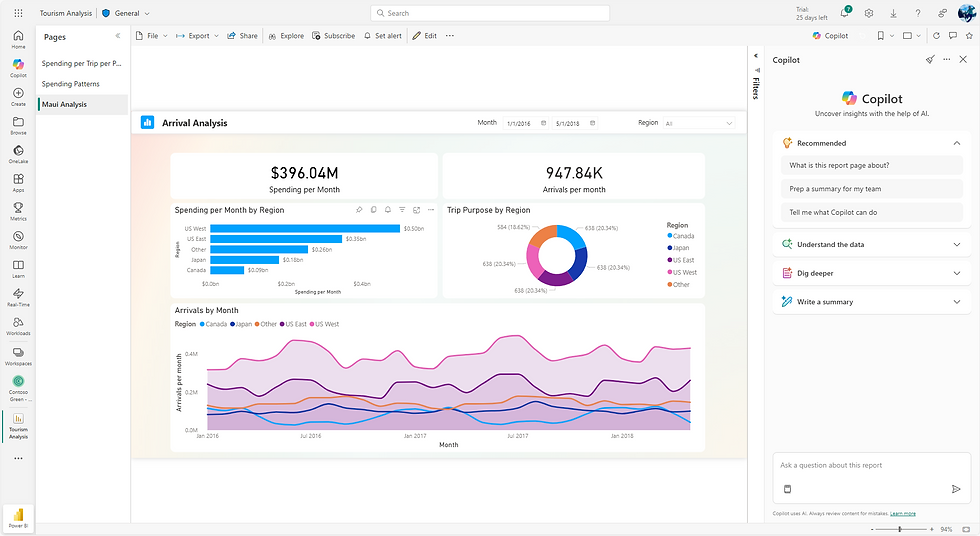
Microsoft Copilot transforms lengthy business documents into concise summaries through a multi-step process that blends AI precision with user customization.
Step 1: Document Ingestion and Analysis
Upon receiving a document—be it a contract, report, or email thread—Copilot first parses the content by:
Breaking down text into logical sections (headings, paragraphs, tables)
Identifying key entities such as dates, names, financial figures
Detecting document type and domain context (e.g., sales report vs. legal contract)
This structural understanding lays the groundwork for targeted summarization.
For instance, in a 100-page annual report, Copilot identifies sections like the CEO’s letter, financial statements, risk disclosures, and market outlook. It extracts tables and charts, linking numerical data with narrative explanations. In emails, it threads conversations, separating sender and recipient details, timestamps, and action items.
Additionally, Copilot can process embedded content such as images, charts, and attachments, extracting textual elements and metadata to build a comprehensive document map. This granular analysis ensures that summaries reflect the full scope of the document rather than isolated text segments.
Step 2: Contextual Query Understanding
Users can prompt Copilot with specific instructions like:
“Summarize key takeaways from this quarterly report.”
“Highlight risks mentioned in this contract.”
“Provide a brief overview of this email conversation.”
Copilot interprets these prompts using natural language understanding to focus on relevant parts of the document.
Beyond simple keyword detection, Copilot analyzes the intent behind queries to adjust the depth and focus of the summary. For example, a prompt asking for “risks” triggers the model to prioritize clauses related to liabilities, compliance issues, or operational threats, while ignoring unrelated sections.
Copilot also supports multi-turn conversations, allowing users to refine summaries iteratively. For example, after an initial summary, a user might ask, “Can you expand on the financial projections?” or “List the action items from this meeting note.” Copilot’s contextual memory enables it to maintain coherence across these exchanges, enhancing usability.
Step 3: Summarization Generation
Using abstractive summarization algorithms, Copilot generates a concise summary that:
Preserves essential facts and figures
Simplifies complex language without losing meaning
Tailors tone and detail level based on user needs (e.g., executive summary vs. detailed analysis)
For example, a 50-page financial report can be condensed into a 200-word summary highlighting revenue growth, key expenses, and future projections.
Copilot’s ability to rewrite content in natural, reader-friendly language helps non-expert stakeholders understand technical or legal documents without needing specialized knowledge. It can also generate bullet-point summaries, narrative paragraphs, or executive dashboards depending on user preferences.
Moreover, Copilot supports multi-lingual summarization, enabling global teams to work with documents in different languages while receiving summaries in their preferred language. This cross-lingual capability expands its utility in multinational corporations.
Step 4: User Review and Refinement
The generated summary is presented for user review within familiar Microsoft 365 interfaces. Users can:
Edit or expand on summaries
Request alternate versions emphasizing different aspects
Save or share summaries directly
This collaborative approach ensures summaries meet organizational standards and specific use cases.
For instance, a legal team might refine a contract summary to include additional compliance notes, while a sales manager might request a summary focusing on customer objections and next steps. These edits are fed back into Copilot’s learning engine, enhancing future outputs.
Copilot also integrates with Microsoft’s version control and collaboration features, enabling multiple stakeholders to comment, suggest changes, and finalize summaries collectively. This reduces email chains and document duplication, streamlining communication.
Real-World Applications: Boosting Business Efficiency
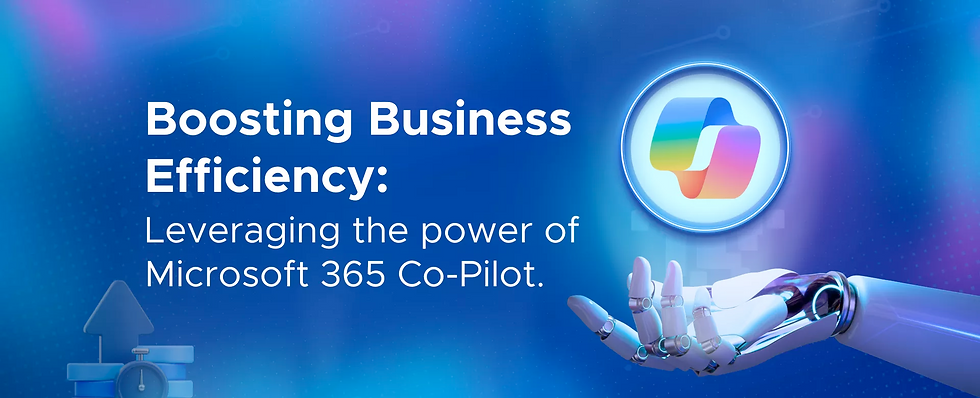
Microsoft Copilot’s document summarization capabilities are already transforming various business functions by automating tedious tasks and enhancing decision-making agility.
Finance and Accounting
Finance teams use Copilot to quickly digest lengthy earnings reports, audit documents, or compliance filings. Automated summaries allow CFOs and analysts to focus on anomalies or trends instead of sifting through dense pages.
For example, during quarterly earnings season, Copilot can generate concise briefs highlighting revenue performance, cost drivers, and key financial ratios. It can also flag unusual variances or risks that might require deeper investigation. This accelerates reporting cycles and supports real-time financial decision-making.
Additionally, tax departments use Copilot to summarize complex regulatory changes or audit findings, reducing the risk of non-compliance and costly penalties.
Legal Departments
Legal professionals benefit from instant contract summaries that highlight obligations, deadlines, and risk factors. This reduces review times drastically while improving accuracy in negotiations or compliance checks.
Copilot can identify clauses related to indemnification, termination rights, or confidentiality, presenting these in an easy-to-understand format for business stakeholders. It also helps paralegals and junior attorneys by pre-digesting voluminous case files or discovery documents, allowing legal teams to focus on strategy rather than document management.
In corporate governance, Copilot summarizes board meeting minutes and resolutions, ensuring that action items and compliance requirements are clearly documented and accessible.
Sales managers can get briefings on client communications or market research reports without needing full reads. Marketing teams use summarized competitive intelligence to shape campaigns faster.
For example, after a customer meeting, Copilot can summarize key discussion points, objections, and next steps, enabling sales teams to follow up effectively. Market researchers can upload competitor analyses and receive distilled insights highlighting strengths, weaknesses, and market opportunities.
Copilot also assists in content creation by summarizing long-form articles or social media trends, helping marketers stay current and produce targeted messaging.
Human Resources
Copilot aids HR by summarizing candidate resumes or employee feedback surveys to streamline hiring decisions and engagement strategies.
Recruiters save time by receiving condensed profiles emphasizing relevant skills, experience, and certifications. During performance reviews or exit interviews, Copilot extracts themes and sentiment from open-ended responses, helping HR leaders identify trends and areas for improvement.
In training and development, Copilot summarizes lengthy policy documents or learning materials into digestible formats, increasing employee adoption and compliance.
Additional Industry Examples
Healthcare: Medical professionals use Copilot to summarize patient histories, clinical trial reports, or regulatory guidelines, improving care coordination and research efficiency.
Manufacturing: Operations teams receive concise summaries of quality audits, safety reports, or supplier contracts, accelerating decision-making and risk management.
Education: Educators and administrators summarize research papers, curriculum documents, or student feedback to improve teaching strategies and institutional planning.
Key Benefits of Using Microsoft Copilot for Document Summarization
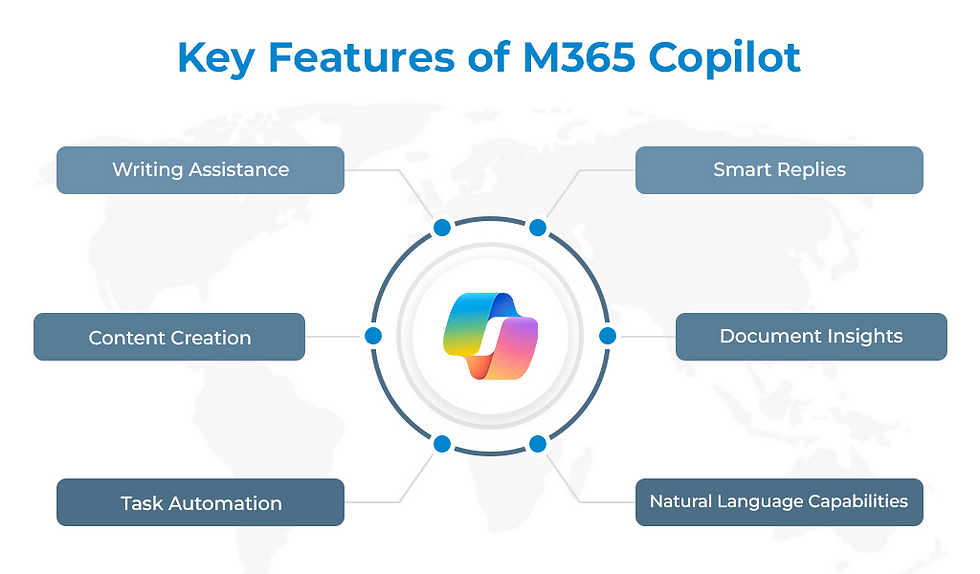
Adopting Microsoft Copilot for document summarization delivers tangible advantages:
1. Time Savings
Automating summary creation cuts hours from manual review processes — enabling faster meetings, decision cycles, and reporting.
In practical terms, a legal team reviewing dozens of contracts weekly can reduce review time by up to 60%, freeing lawyers to focus on negotiation and strategy. Similarly, financial analysts can produce earnings summaries in minutes rather than days, accelerating investor communications.
2. Increased Accuracy
AI reduces human error and ensures consistent extraction of critical data points across similar document types.
Unlike manual summarization, which can omit key details due to fatigue or oversight, Copilot applies standardized criteria to every document. This consistency is crucial for compliance-heavy industries where missing deadlines or obligations can lead to fines or legal disputes.
3. Enhanced Productivity
Professionals spend less time reading repetitive content and more time applying insights strategically.
By offloading routine summarization tasks, teams can allocate resources toward innovation, client engagement, and problem-solving. This shift enhances job satisfaction and overall organizational performance.
4. Customizable Outputs
Copilot adapts summaries based on user roles or departments, delivering relevant information tailored to audience needs.
For example, executives receive high-level overviews focusing on strategic metrics, while analysts get detailed breakdowns with supporting data. Marketing teams might prefer summaries emphasizing customer sentiment, whereas legal teams focus on risk.
This flexibility ensures that summaries are actionable and aligned with organizational priorities.
5. Seamless Integration
Embedded within Microsoft 365 apps means no need for switching platforms — summaries appear where users already work.
This reduces training requirements and adoption friction. For example, a project manager can generate a summary within Teams during a meeting without leaving the conversation window. Similarly, analysts can summarize Excel data narratives inline, streamlining workflows.
Benefit | Description | Impact |
|---|---|---|
Time Savings | Reduces manual reading time | Faster decision-making |
Accuracy | Minimizes missed details | Improved compliance & risk management |
Productivity | Frees up resources | Focus on high-value tasks |
Customization | Tailors summaries by context | Better user satisfaction |
Integration | Works within existing workflows | Smoother adoption |
Integration with Microsoft 365 and Other Platforms
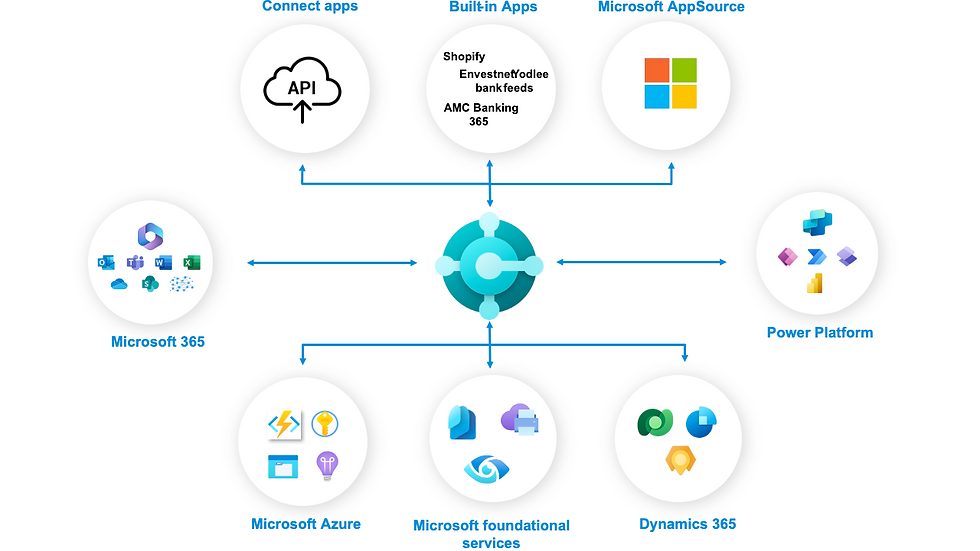
One of Copilot’s greatest strengths is how it integrates seamlessly within the familiar Microsoft ecosystem:
Embedded in Word, Excel, Outlook, Teams
Word: Generate executive summaries of reports or proposals. For instance, a project proposal document can be condensed into a summary highlighting objectives, deliverables, and timelines, enabling quicker stakeholder reviews.
Excel: Summarize complex financial spreadsheets into understandable narratives. Copilot can translate raw data and formulas into plain-language summaries describing trends, anomalies, or forecasts, aiding non-technical users.
Outlook: Extract key points from lengthy email threads. Copilot can thread conversations, identify action items, deadlines, and decisions, helping users prioritize responses and follow-ups efficiently.
Teams: Get meeting notes condensed automatically after calls. Copilot can capture decisions, assigned tasks, and next steps, reducing manual note-taking and improving team alignment.
Extensibility Through APIs
Organizations can extend Copilot’s capabilities via Microsoft Graph API integrations to customize summarization workflows or embed them in proprietary applications.
For example, a company might integrate Copilot with their CRM system to automatically summarize client interactions or with a document management system to generate compliance briefs. Developers can tailor Copilot’s behavior to specific use cases, ensuring alignment with corporate policies and workflow requirements.
Cross-Platform Collaboration
Summaries created by Copilot can be shared instantly across departments through SharePoint or OneDrive, fostering collaboration without information silos.
Teams distributed across locations can access uniform, up-to-date summaries, enhancing transparency and speeding up project timelines. Version control and access management ensure that sensitive information is shared securely and appropriately.
Security and Privacy Considerations
Handling sensitive business documents requires rigorous security protocols. Microsoft prioritizes data protection in Copilot by implementing:
Data encryption at rest and in transit: All document data and AI-generated outputs are encrypted using industry-standard protocols to prevent unauthorized access.
Compliance with industry standards such as GDPR, HIPAA: Microsoft ensures Copilot meets global regulatory requirements, supporting organizations in regulated sectors.
Tenant isolation ensuring enterprise data does not mix across organizations: Each customer’s data and AI interactions are segregated, preventing data leakage or cross-contamination.
User control over data sharing with transparency on AI processing: Users have visibility into how their data is used, with options to opt-out of data retention or sharing for model training.
Additionally, Microsoft employs advanced threat detection and monitoring to protect Copilot services from cyberattacks. Regular audits and third-party assessments validate the security posture.
For enterprises with heightened security needs, Microsoft offers deployment options such as on-premises or hybrid cloud solutions, enabling AI capabilities while maintaining full control over data residency.
These robust safeguards allow organizations to confidently deploy Copilot even in highly sensitive environments like healthcare, finance, or government.
Future Trends: The Evolution of AI in Business Document Management
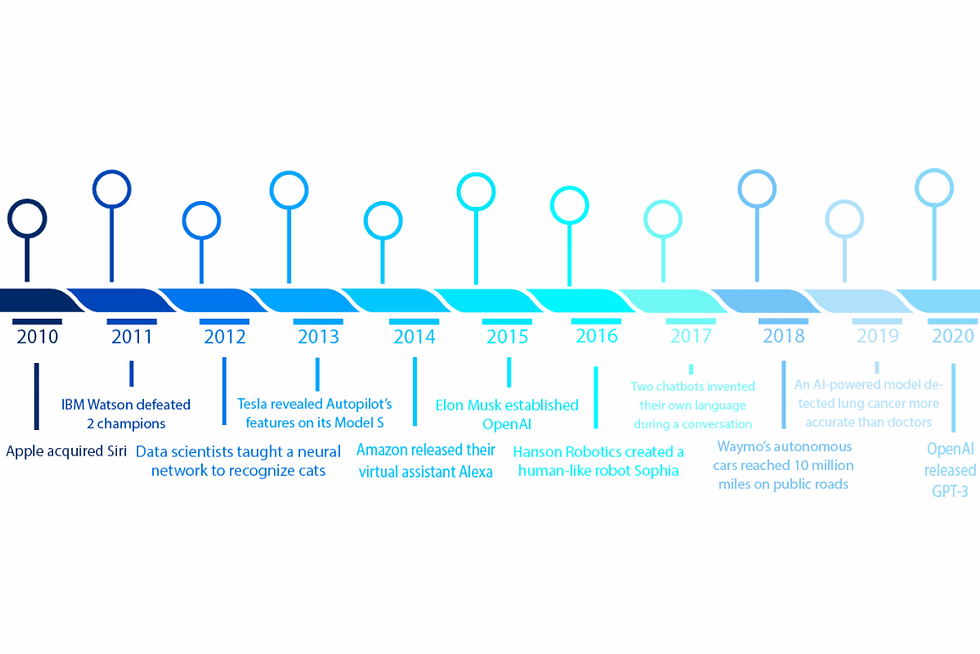
Looking forward, AI-powered document summarization will continue evolving along several trends:
Multimodal summarization combining text with images, charts, or video for richer insights.
Future Copilot versions might analyze embedded visuals—such as infographics or video presentations—alongside text to produce integrated summaries offering a holistic understanding. For example, a marketing report summary could include key chart highlights or video transcript excerpts.
Real-time collaboration where AI assists multiple users simultaneously during document editing.
AI will become a co-author that not only summarizes but also suggests edits, flags inconsistencies, and reconciles conflicting inputs from collaborators in real time, streamlining document workflows and reducing version conflicts.
Industry-specific tuning, offering hyper-customized models trained on proprietary datasets.
Organizations will benefit from AI models tailored to their unique terminologies, regulatory frameworks, and business processes, delivering even higher accuracy and relevance.
Explainable AI, providing transparency on how summaries are generated to build trust.
Users will gain insights into which document sections influenced summary points, enabling verification and reducing reliance on “black box” AI outputs.
Voice-enabled summarization, allowing spoken commands to generate or consume summaries on the go.
Mobile and hands-free use cases will flourish as professionals dictate queries and receive auditory summaries, enhancing productivity in dynamic work environments.
Beyond these, integration with emerging technologies such as augmented reality (AR) and blockchain could further transform document management, enabling immersive review experiences and immutable audit trails.
Businesses adopting Microsoft Copilot today position themselves at the forefront of these innovations — transforming how knowledge work is done.
Conclusion: Embracing AI for Smarter Business Decisions
Microsoft Copilot harnesses advanced AI technology to revolutionize business document summarization — turning overwhelming information into actionable insights swiftly and accurately. By automating this traditionally manual process within familiar tools like Word and Outlook, Copilot empowers professionals across finance, legal, sales, HR, and beyond to make smarter decisions faster.
Key takeaways include:
The power of large language models enables deep contextual understanding.
Customizable summarization meets diverse business needs.
Seamless integration drives adoption without disrupting workflows.
Strong security frameworks protect sensitive enterprise data.
As companies face growing data challenges, embracing solutions like Microsoft Copilot becomes essential for maintaining competitive advantage. By unlocking information’s true value through intelligent summarization, organizations can maximize productivity and accelerate innovation.
FAQ: Microsoft Copilot Document Summarization
Q1: What types of documents can Microsoft Copilot summarize? A1: Copilot can summarize a wide range of business documents including reports, contracts, emails, meeting notes, spreadsheets, presentations, and more within the Microsoft 365 ecosystem. It supports various file formats such as DOCX, XLSX, PPTX, PDF (when integrated with Microsoft’s PDF tools), and email threads, enabling broad applicability across departments.
Q2: How accurate are summaries generated by Microsoft Copilot? A2: While accuracy depends on document complexity and prompt clarity, Copilot leverages advanced AI models trained on enterprise data ensuring high precision. Users can review and refine summaries as needed. The system’s continuous learning from user feedback also improves accuracy over time, particularly in specialized domains.
Q3: Is my data secure when using Copilot? A3: Yes. Microsoft implements stringent security protocols including encryption, compliance with regulations like GDPR/HIPAA, tenant isolation, and user data controls to protect sensitive information. Additionally, data is processed within the customer’s tenant environment, and Microsoft does not use customer data to train models unless explicitly permitted.
Q4: Can I customize the length or focus of the summary? A4: Absolutely. Users can specify summary length (e.g., brief executive vs detailed) and focus areas (e.g., risks in contracts), allowing flexible outputs tailored to needs. Copilot supports natural language commands to adjust tone, format, and depth, enabling summaries that fit diverse business contexts.
Q5: Does Copilot work outside Microsoft 365 applications? A5: Currently, Copilot is integrated primarily within Microsoft 365 apps but can be extended via APIs for custom workflows or third-party software integrations. Organizations can embed Copilot’s summarization capabilities into proprietary platforms or customer-facing applications, expanding its reach beyond native Microsoft tools.


